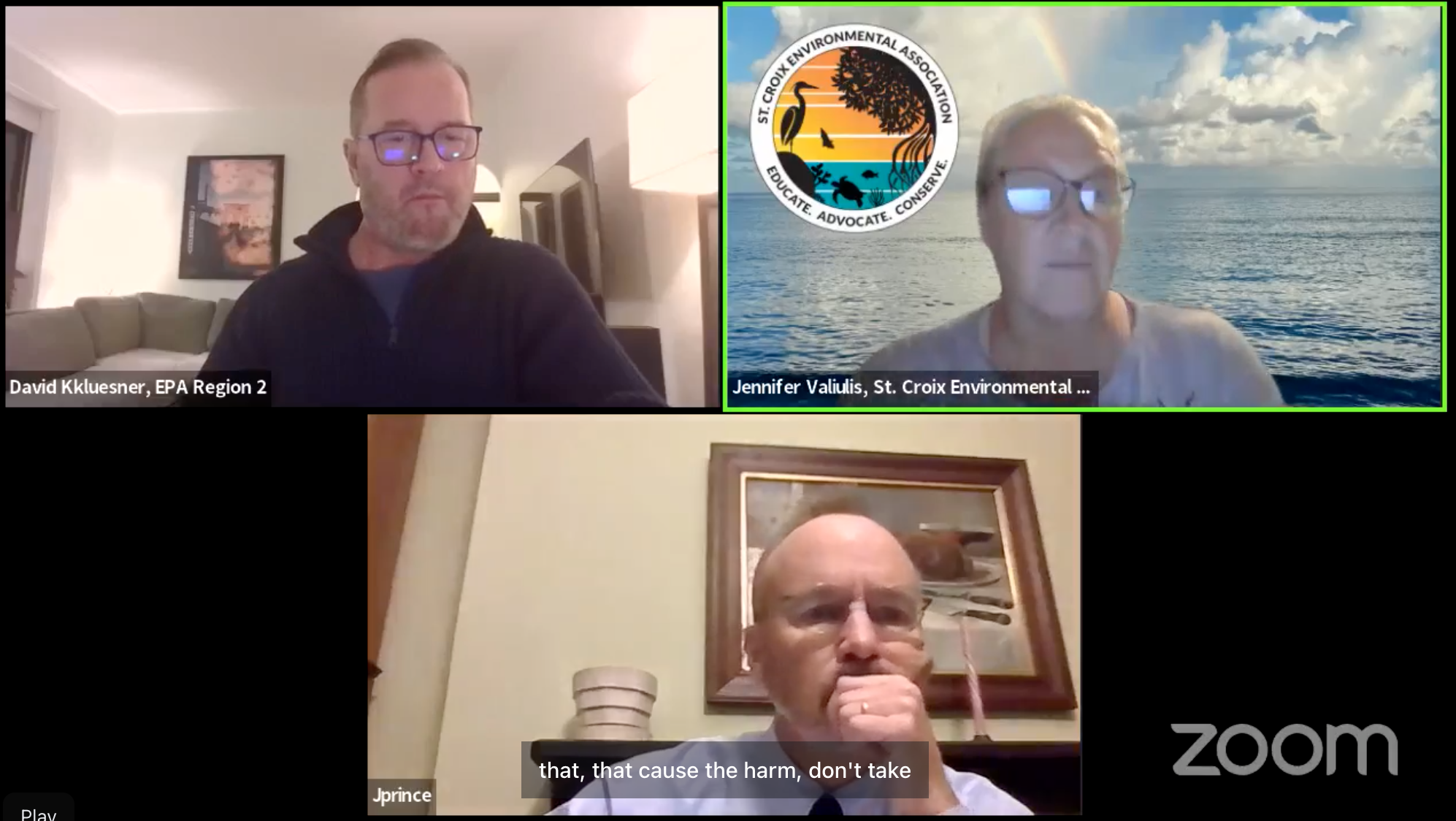
On Tuesday evening, the Environmental Protection Agency held a virtual community meeting to update the St. Croix community about site clean-up programs. Moderated by David Kluesner from the EPA, the night was a plethora of information.
Jennifer Valiulis from St. Croix Environmental Association said, “To provide a little bit of context to this information session, we have seen so many times here in the Virgin Islands where environmental damage or neglect happens and those that cause the harm don’t take responsibility, they leave island, declare bankruptcy for whatever reason and we are left with the mess.”
“We’ve seen this on small scales and very large scales,” said Valiulis.
John Prince, deputy director of the Superfund and Emergency Management Division in Region 2 of the EPA, explained the Superfund Program’s general overview and process.
Some programs associated with Superfund are the Comprehensive Environmental Response, Compensation and Liability Act of 1980, Clean Air Act – the “General Duty Clause,” Clean Water Act, and nationally declared emergencies.
“The key thing about the Superfund Program is that we are responding to releases, hazardous substances, pollutants or contaminants into the environment,” said Prince.
He said that the Superfund evaluates short-term and long-term exposures to even relatively low levels of contamination released into the environment. “Superfund evaluates exposure pathways that can affect human health or ecological receptors,” said Prince.
Later, Manager Adolph Everett from the Land Chemical Redevelopment Division spoke about the Resource Conservation and Recovery Act Corrective Action Cleanup Program (RCRA), which was established in 1986.
“RCRA-permitted facilities must investigate and clean up releases of hazardous waste or constituents to the environment at the facility,” Everett said. He used the HOVENSA refinery as an example for his presentation.
“The former HOVENSA refinery managed hazardous waste as a part of its refinery operations and was issued an RCRA permit by EPA,” he said.
He said that the site investigations identified groundwater contamination resulting from slow, systematic leaks of petroleum from underground process sewers, pipelines, and storage tanks.
The contamination includes light oil plumes and dissolved oil plumes. Everett said that since then, there has been an extensive groundwater monitoring and contaminant recovery network. The groundwater contamination is controlled on-site, and more than 99 percent of the estimated light oil plume volume has been removed from the groundwater table. Over 44.5 million gallons of light oil have been recovered and about 82,000 gallons remain, and that cleanup continues.
Everett said that HOVENSA Environmental Response Trust has proposed final cleanup remedies for on-site work and oil plumes under a draft RCRA permit renewal, for which EPA is reviewing the application and will provide a public comment period. Based on the comments that the EPA receives, it will decide whether to issue the permit with modifications or not.
To hear the full meeting, visit the EPA Region 2 Facebook page.


